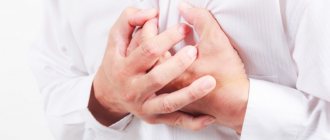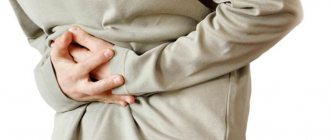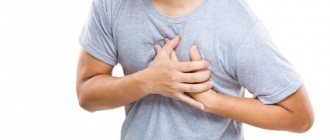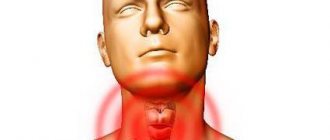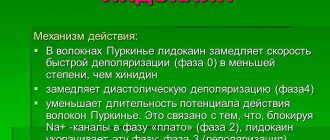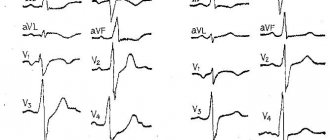We asked Larisa Tretyakova, gastroenterologist, doctor of the highest category, head of the department of the PharmMed Clinic , to tell us what most often hurts in the epigastric area, how to understand your own sensations and what diagnostic procedures are necessary in this case.
Almost every resident of a big city has experienced pain in the upper abdomen - right in the triangle under the ribs. Most often, epigastric pain indicates diseases of the digestive system.
Let's first figure out exactly what organs are located here. This is the stomach that passes into the duodenum. To the left of the stomach is the pancreas, which is responsible not only for digestion, but also for hormonal control - in particular, it produces insulin, which cells need to absorb nutrients. The spleen is also located here, which is responsible for purifying the blood and functioning of the immune system. To the right of the stomach the gallbladder and liver are densely packed. All of these organs (with rare exceptions) can be a source of pain localized in the epigastric region.
High-intensity physical activity and various types of injuries
Most often, discomfort occurs in novice athletes.
This does not indicate the presence of any pathology in the body, but is a kind of “bell” indicating that the person is doing the exercises incorrectly. Heaviness in the solar plexus can also occur in professional athletes. In this case, the presence of discomfort indicates that the physical activity is too intense. In addition, heaviness is accompanied by pain. The latter is acute (burning or stabbing) in nature. Sometimes the pain is so severe that a person is forced to interrupt the workout and rest.
As a rule, pain and a feeling of heaviness in the solar plexus, which occurs against the background of high-intensity physical activity or improper exercise, are not an alarming symptom. If they occur, it is enough to interrupt the workout and rest. Then it is recommended to make adjustments to the lesson plan.
However, it is worth knowing that regular high-intensity exercise, accompanied by pain and heaviness in the solar plexus, can lead to the development of an inflammatory process in the nerve fibers. And this is a condition that requires medical intervention.
Also, one of the most likely causes of heaviness in the solar plexus is some kind of injury. The latter may be a consequence of:
- Impact. This is especially true for athletes involved in wrestling. Even a ball hitting the solar plexus while playing football can cause significant discomfort.
- Falling and, accordingly, hitting any surface.
- Strong tightening of the belt on the stomach. In addition, heaviness also appears when wearing tight, high-waisted trousers.
After receiving an injury, a person experiences heaviness and burning pain. Discomfort is localized in the area between the lower edge of the sternum and the navel.
In addition, if the cause of their occurrence is injury, after receiving the latter, other alarming symptoms may appear:
- Nausea.
- Frequent urge to perform an act of defecation.
- Sensation of burning and warmth inside the abdominal cavity.
- Violation of the breathing process. Most often it is very difficult to take a breath.
- Painful sensations can radiate to the chest, in particular to the heart area. At the same time, they are stupid in nature.
- If the discomfort is severe, the person involuntarily bends his knees and presses them to his stomach.
As part of first aid, the victim must be laid on a flat surface and forced to breathe evenly. As a rule, to do this, it is enough to straighten it. In addition, if the injury is minor, you can massage the victim's solar plexus area.
If you suspect a serious injury, you should call an ambulance. Doctors will transport the victim to a hospital, where they will competently draw up a treatment plan for him.
Heaviness in the solar plexus
The solar plexus also has another name - the splanchic plexus. It contains a large center of nerve cells, which extend with nerve endings in different directions. Nerve fibers emanating from the solar plexus are connected to the nerve endings of almost the entire body. Thanks to this structure, communication between internal organs and the central nervous system is ensured.
- Causes
- Diagnostics
- Treatment
- Folk remedies
Any pain or feeling of heaviness in the solar plexus is a projection of a disease of any organ and serves as a signal of the development of pathology. Also, these unpleasant sensations can occur due to mechanical trauma to this area or due to frequent nervous stress.
Causes and predisposing factors
The most common cause of pain and heaviness in the solar plexus are various injuries:
- in case of a fall from a height;
- during a strike at sports competitions (boxing, karate, wrestling);
- due to a sudden impact with someone or something, such as a car accident.
Pain and a feeling of heaviness in this area also occur in novice athletes after unusual heavy physical exertion, during strong tightening of the waist with a belt, after prolonged physical work.
In the event of a strong collision or sharp blow, not only very severe sharp pain may appear, but also cramps in the intestines, nausea, and vomiting. Pain can radiate under the shoulder blade, into the chest, and into the chest area.
Sometimes a person finds it difficult to breathe and needs immediate medical attention.
Other causes of a feeling of heaviness in the solar plexus:
- Inflammation of the nerves.
It can appear as a separate disease, or it can arise due to constant stress, anxiety, anxiety, or during severe fright (there is constant compression and spasm of the nerve endings, as a result of which inflammation begins). The pain is dull, pressing, aching. - Irritation of the nerves, or in other words – neuralgia. With it, the pain is sharp, acute, sometimes preventing a person from taking a deep breath. Can get worse with any body change.
- Solarite.
This disease is a complication of other diseases that have not been treated properly. The pathology affects the nerve nodes of the solar plexus. The pain is strong, intense, sharp. - Chronic gastritis of the stomach. Since this organ is located approximately at the same level as the solar plexus, during an exacerbation of gastritis, the pain can be constant, sharp or bursting, especially after eating.
- Stomach ulcer.
Pain and a feeling of heaviness occur at any time, especially at night. The character is sharp, stabbing, often with distension in the solar plexus area. - Duodenal ulcer, duodenitis. The pain is almost the same as with a stomach ulcer. Also often sharp and bursting.
- A tumor in the stomach or upper intestine.
The pain in the presence of neoplasms is dull, pulling, pressing.
Inflammatory and infectious diseases can also cause a feeling of heaviness in the solar plexus. This:
- Powerful networks of worms and other parasites localized in the intestines or other internal organs. In this case, bursting pain occurs, radiating to the solar plexus and/or hypochondrium.
- Infectious and inflammatory process of the pharynx, esophagus, trachea.
- Bacterial intestinal infections. Characterized by severe sharp pain in all parts of the abdomen, radiating to the solar plexus. In this case, loose stools and impurities in the stool are observed.
- Inflammation and/or compression of spinal nerves, nerve roots, discs. The pain is severe, acute, and can radiate to the solar plexus or be characterized as shingles.
- Inflammation of the peritoneal cavity - peritonitis. The pain is sharp, bursting, pressing. May cause fainting.
Diagnostics
Since heaviness in the solar plexus can indicate a wide variety of diseases, the diagnosis should be comprehensive and performed by a good, experienced specialist. First, the doctor performs palpation and a clinical examination, then prescribes an ultrasound of the internal organs, laboratory tests of blood and urine, and x-rays.
Depending on the suspicion of a particular diagnosis, an appointment is made for a consultation with a particular specialist. This could be a neurologist, surgeon, infectious disease specialist, gastroenterologist.
Folk remedies
In the treatment of gastric diseases, traditional methods of treatment can also be used.
For gastritis, gastric or duodenal ulcers, the following help well: honey-propolis therapy, calendula juice, freshly squeezed aloe juice with the addition of natural honey.
Herbal decoctions of chamomile flowers, flax seeds, coltsfoot or rose hips are also effective. Rosehip will also strengthen the immune system and increase the body's resistance to various adverse environmental factors.
But we must remember that folk remedies are effective only as an addition to complex treatment prescribed by a doctor, and in the vast majority of cases, when there is a feeling of heaviness in the solar plexus, they cannot replace drug therapy.
Galina Vladimirovna
Source: https://comp-doctor.ru/zoj/tyazhest-soln.php
Other possible reasons
Heaviness in the solar plexus area is a symptom that may indicate the presence of many ailments.
Other possible reasons:
- Chronic gastritis. In this case, heaviness appears in the solar plexus after eating.
- Duodenitis. It is accompanied not only by heaviness, but also by a feeling of fullness.
- The presence of a neoplasm of both benign and malignant nature. As the tumor grows, the feeling of heaviness is replaced by a pressing dull pain.
In addition, discomfort may appear due to the progression of infectious diseases.
A lump in the throat is a subjective sensation of a person, in which there is difficulty breathing and swallowing
One of the most common disorders associated with the sensation of a lump or plug in the celiac plexus area is severe stress, anxiety, and emotional crises. The symptom may appear in people in a serious psychological state after some shock or prolonged unfavorable life situation. In this case, a psychotherapist is initially involved in the study and treatment of the disorder, and other specialists are simultaneously involved.
One of the reasons for the feeling of a lump in the solar plexus may be inflammation of the nerves. Neuritis often develops in people under conditions such as low or excessive physical activity, intestinal infections, and surgical interventions. In addition to pain and the sensation of a lump, there are symptoms characteristic of gastrointestinal diseases:
- the pain is acute, paroxysmal in nature, it is very strong, drilling;
- symptoms often radiate to the back; during an attack, the patient cannot stand or sit, and strives to take a lying position on his side;
- after stress or physical activity, the pain intensifies;
- there is a feeling of heat inside the abdomen.
In this case, a neurologist should treat the patient. However, instrumental diagnostics are required to exclude other diseases.
One of the reasons for the sensation of a lump in the solar plexus may be neuralgia
With neuralgia, the nerves are constantly irritated by extraneous factors, but in this case there is no inflammation of the endings. A variety of diseases can provoke neuralgia:
- intestinal, pulmonary, heart parasites, viruses, as well as infections;
- lung pathologies such as pleurisy;
- heart diseases associated with disruption of its activity and pumping function;
- high blood pressure caused by vascular pathologies or hernia.
The symptoms of neuralgia are very similar to neuritis; only a neurologist can distinguish it.
Solaritis is a disease based on damage to the solar plexus.
The disease is associated with neuralgia or neuritis, and is characterized by complications of these disorders, acute pain. Occurs when the patient does not consult doctors for treatment of neuritis or neuralgia. Symptoms become prolonged, the pain is burning, a lump in the solar plexus spreads to the throat. Pain appears in the chest and almost always radiates to the heart, and heaviness, bloating and discomfort remain in the stomach, constipation and heartburn often occur. The patient also has problems with appetite.
Gastroscopy of the stomach for the presence of gastritis
The sensation of a lump in the solar plexus often occurs against the background of an acute course of chronic diseases of the digestive system:
- Gastritis. It occurs with inflammation of the mucous membrane, symptoms occur immediately after eating. At first there may be pain, and then a feeling of heaviness, discomfort, coma. The symptoms are especially strong during prolonged hunger. Similar, only stronger symptoms occur with ulcers.
- Stomach tumors. Pressing and bursting sensations in the area of the celiac ganglion are one of the most common signs of tumors when they reach large sizes. Pain and a feeling of heaviness may occur suddenly, for several hours or days.
- Diseases of the pancreas. Acute pancreatitis is accompanied by pain and vomiting, after which unpleasant symptoms develop in the area of the celiac node. Pancreatitis is accompanied by high fever, vomiting bile without relief.
- Pancreatic tumors. They may be accompanied by heaviness and a feeling of a lump in the solar plexus.
The sensation of a lump in the solar plexus can trigger pneumonia
Other common diseases in which a plug in the solar plexus area becomes a permanent symptom include: tumors and erosions of the esophagus, as well as gastroesophageal reflux disease, pathologies of the pleura of the chest, and pneumonia.
Heart diseases can also provoke such an unpleasant symptom, the most common of which are ischemia and heart failure. In some cases, the symptom occurs with angina pectoris and is combined with acute, burning pain over the solar plexus.
A feeling of a lump in the throat often occurs with a diaphragmatic hernia, when part of the esophagus or stomach comes out through a hole in the diaphragm. Another provocateur of a coma in the celiac ganglion can be intercostal neuralgia.
A chest x-ray may be prescribed to diagnose the disease.
The solar plexus is a huge nerve node, the most unprotected and sensitive in the human body. Symptoms radiating to this area can be associated with a wide range of diseases. Therefore, the diagnosis must be comprehensive:
- X-ray of the chest and abdominal cavity to study the condition of bones and organ tissues;
- Ultrasound of the abdominal cavity;
- MRI and CT in difficult cases;
- laparoscopy of the abdominal cavity for suspected acute diseases;
- laboratory tests of stool, blood and urine.
Gastric gastroscopy procedure
Sometimes specific examination methods are required, for example, FGDS to study the condition of the stomach and esophagus.
Methods for treating poor health depend on the pathology detected. These may include:
- drug therapy;
- surgical treatment in case of detection of acute peritonitis, hernia;
- physiotherapeutic treatment for neuritis, as well as as an additional method for chronic pathologies of the lungs and gastrointestinal tract;
- folk recipes - only as an aid in the fight against the disease.
The patient should remember that acute pain, combined with a feeling of heaviness or a sensation of a lump in the solar plexus area, requires an immediate call to the ambulance team.
If the lump in the solar plexus area has no physiological causes, a psychotherapist will treat it. The doctor prescribes a set of psychotherapeutic consultations, as well as additional group methods, if justified by the person’s condition. The doctor prescribes sedatives and antidepressants, if necessary. However, medical professionals recommend limiting yourself to herbal remedies.
Why does it hurt under the solar plexus?
Pain in the epigastric region for various reasons - it could be pathologies of the gastrointestinal tract or the appearance of reflected pain from other organs. The method of eliminating the pathology depends on why pain appears in the solar plexus. Let's consider what provokes the appearance of pain in the epigastric region and what to do if pain occurs.
Gastritis
Pain syndrome in the solar plexus most often appears due to the inflammatory process in the gastric mucosa.
Causes of the disease
Many factors can trigger gastric inflammation. The most common :
- Helicobacter pylori infection;
- unhealthy diet (dry food, abuse of smoked food, excess spices);
- smoking;
- drinking alcohol;
- long-term treatment with non-steroidal anti-inflammatory drugs;
- poisoning
Sometimes the cause of gastritis is autoimmune processes, but more often it is bad habits and poor diet.
© shutterstock
Signs of the disease
The nature of the pain depends on the course of the disease. With acute gastritis, the pain will be severe, and with chronic gastritis, it will hurt moderately (dull pain). In addition to pain, the patient has the following symptoms :
- dyspepsia;
- flatulence;
- heartburn;
- nausea and/or vomiting;
- decreased appetite;
- belching with an unpleasant aftertaste.
In acute gastritis, the pain is severe and diarrhea often develops, while the chronic course can only be accompanied by epigastric discomfort, unpleasant belching, and loss of appetite.
Who will help
If there is pain inside under the solar plexus and there is a suspicion of gastritis, then you should visit a therapist or gastroenterologist.
Osteochondrosis and vertebral hernias
Pathologies of the spine, accompanied by destruction of the intervertebral discs, will impair the nerve processes. In this case, the pain may radiate to the epigastric region.
© shutterstock
Symptoms
Signs of the disease depend on the location and severity of compression of the nerve process. With strong compression, there will be a sharp pain in the solar plexus, and with slight compression, dull or moderate pain .
Painful discomfort can appear both above and below the epigastric region - it depends on where in the spine the injury is located.
In case of vertebral pathologies, if there is pain under the solar plexus, dyspeptic disorders may additionally occur. This is a sign that the innervation of the intestine is impaired.
Which doctor treats
You should visit an orthopedist or neurologist.
OKS
Usually, with acute coronary syndrome, which occurs with myocardial infarction or severe angina, there is pain on the left behind the sternum, but this is not always the case, sometimes due to cardiac pathologies there is pain under the solar plexus.
© shutterstock
Which doctor will help?
Cardiologists and resuscitators treat acute cardiac pathologies.
Why else can the solar plexus hurt?
Let's look at less common causes of pain under the solar plexus:
- Intestines. When the duodenum or small intestine is inflamed, pain appears just below the solar plexus. If the pain is low, then perhaps the pathological process affects part of the large intestine.
- Wearing tight things. More often than not, women suffer from this when they choose narrow clothes. In this case, pain below the solar plexus will be associated with wearing certain clothes.
- Irritation of the nerve plexuses. Nerve plexuses are localized in the celiac region, irritation of which can be accompanied by pain. The provoking factor will be hard work or injury.
© shutterstock
Pain in the solar plexus can occur for various reasons. But if pain occurs frequently or painful discomfort does not go away for a long time, you should visit a doctor.
Instead of a conclusion
It almost always hurts in the epigastric region due to the development of pathology. It is especially dangerous when there is chest pain under the solar plexus. Let's consider in what cases emergency assistance is needed :
- Knowing the reason. If you start getting sick after breaking your diet or wearing tight clothes, you can take analgesics and then visit a doctor.
- The nature of the pain syndrome. Acute or cramping pain requires emergency assistance.
- Do medications help? If after using analgesics the pain subsides, you can postpone the visit to the clinic for a while. When the pain does not go away, you need to call an ambulance.
You should not ignore the symptoms that arise in the solar plexus. Frequent or prolonged epigastric pain will indicate the development of a serious illness.
Source: https://PrichinyBolej.ru/201-pochemu-bolit-pod-solnechnym-spleteniem.html
Neuralgia
Another common cause of heaviness in the solar plexus. The term “neuralgia” refers to a pathological process, the course of which is accompanied by irritation of nerve fibers.
At the initial stage of development of the disease, the only concern is heaviness in the solar plexus. But soon intense pain appears. It is so sharp and sharp that a person has to make a lot of effort to inhale. Thus, if a person is bothered by heaviness in the solar plexus and has difficulty breathing, in 80% of cases we are talking about neuralgia. Some patients are also bothered by a feeling of heat in the area.
The causes of the disease are very diverse. Neuralgia may result from:
- Intervertebral hernia.
- Osteochondrosis.
- Various types of lower back injuries.
- Fracture of the femur or pelvic bones.
- The appearance of a neoplasm. The latter can be both benign and malignant.
- Hypothermia of the thighs, lower back or buttocks.
- A lifestyle that does not involve physical activity.
- Intense loads on the lumbar region.
- Pregnancy.
- Obesity.
- Progression of pathologies of the pelvic organs.
If heaviness occurs in the solar plexus, you should consult a therapist. The specialist will take a medical history and conduct a physical examination. If neuralgia is suspected, the therapist will refer you to a neurologist for treatment.
Diagnosis of the disease involves undergoing the following studies:
- NMR.
- CT.
- X-ray.
In addition, it is necessary to donate blood and urine for general and biochemical examination.
The classic treatment regimen for neuralgia is as follows:
- Taking anti-inflammatory drugs. The therapy also relieves pain. Most often, doctors prescribe Baclofen and Ibuprofen.
- Taking or intravenously administering medications containing B vitamins.
- Taking a course of physiotherapy. As practice shows, acupuncture helps achieve good results.
Treatment of women during pregnancy is carried out in a hospital setting.
Solarite
In medicine, the disease is also called idiomatic peripheral autonomic neuropathy. In the medical literature you can also find the concept of “solar plexitis”. Behind all these terms lies an inflammatory process occurring in the solar plexus.
The main reasons for the development of solarite:
- Injuries resulting from a fall or blow.
- Lordosis.
- Enteroptosis.
- Abdominal aortic aneurysm.
- Spinal pathologies of a dystrophic or degenerative nature.
- Inflammatory processes in the abdominal organs.
- Flu.
- Peritonitis.
- Syphilis.
- Tuberculosis.
- Helminthic infestations.
- Colitis.
- Poisoning by chemical compounds.
- Tobacco smoking.
- Regular consumption of alcoholic beverages.
- Lesions of the hypothalamus.
- Prolonged stay in a state of stress.
The main symptom of solaritis is heaviness in the solar plexus area. At the same time, the discomfort is in no way related to food intake. There is pain when lying on your back. The latter is aching and boring in nature.
Sometimes the course of the disease is accompanied by a short-term deterioration in health. Symptoms appear suddenly and disappear abruptly. In this case, it is customary to talk about a solar crisis. It can occur every day or even once a month. A solar crisis is always accompanied by pain and a feeling of heaviness in the solar plexus.
In addition, the following symptoms may occur against its background:
- High blood pressure.
- Tachycardia.
- Stool disorders.
- Headache.
- Nausea.
- Vomit.
- Fear of death.
- Inadequate perception of reality.
- Uncontrolled aggression.
If signs of solaritis occur, you should consult a physician. Based on the results of the initial diagnosis, he will refer you for a comprehensive examination, including consultations with a gastroenterologist, neurologist, surgeon and infectious disease specialist.
The goal of treatment is to eliminate the provoking factors that triggered the development of solaritis. When a crisis occurs regularly, symptomatic therapy is paramount.
The classic treatment regimen for solaritis is as follows:
- Taking painkillers and antispasmodics. As a rule, doctors prescribe No-shpu, Papaverine and Tifen.
- Taking adrenergic and ganglion blockers. Most often, doctors prescribe Anaprilin and Pentamin.
- UHF therapy.
- Segmental massage.
- Vacuum therapy.
- Taking vitamins A, C and group B.
- Electrophoresis with calcium.
- Exercise therapy.
In addition, people who periodically suffer from a crisis are advised to undergo sanatorium-resort treatment.
Pain appears: what to do?
So, you have noticed pain in the place where the upper abdomen ends and the chest begins. Discomfort can occur repeatedly over a long period of time. In some cases, the pain manifests itself in excruciating attacks. Note what features the pain appears.
We recommend the following algorithm of actions:
- If you experience dull but tolerable pain, take antispasmodics and painkillers. After a certain time, the unpleasant symptoms will disappear. If the feeling of discomfort in this area appears again, it is important to understand whether it arises on its own or as a result of some provoking factors. Don't put off visiting a doctor.
- If you experience sudden severe pain localized in this area, immediately call an ambulance.
Perhaps painful sensations in this place are an SOS signal that your body gives. Do not ignore it, seek medical help in a timely manner.
Site doctor: Anton Palaznikov
Gastroenterologist, therapist
Work experience more than 7 years.
Professional skills: diagnosis and treatment of diseases of the gastrointestinal tract and biliary system.
Stomach ulcer
This is a pathology, the course of which is accompanied by the formation of specific defects in the gastroduodenal zone. Ulcers can be either multiple or single.
The main reason for the development of the disease is ignoring the signs of gastritis, which, in turn, arose against the background of active activity of Helicobacter pylori.
However, the presence of infection in the body does not guarantee the occurrence of the disease. The process of disease development starts only when exposed to one or more provoking factors.
These include:
- Frequent consumption of alcoholic beverages.
- Irregular and unbalanced diet.
- Long-term use of medications.
- Overstrain (both nervous and physical).
- Lack of vitamins in the body.
- Prolonged stay in a state of stress.
- Injuries to the abdominal organs or spine.
- The presence of blood clots in the blood vessels supplying the stomach.
- Sleep deficiency.
Clinical manifestations and their severity directly depend on the location of the ulcer and the individual characteristics of the body. The main symptoms of the disease are pain and heaviness in the solar plexus area after eating. However, some patients complain only of mild discomfort. Others say the pain is unbearable.
Signs of pathology (except for heaviness in the solar plexus):
- Belching. It has a sour taste.
- Heartburn.
- Nausea that occurs immediately after eating.
- Vomit. It brings significant relief.
- A sharp decrease in body weight.
- Sleep disorders.
- Anemia.
The most alarming symptom is vomiting associated with coffee grounds. It indicates internal bleeding.
Diagnosis of the disease involves undergoing a comprehensive examination, including:
- FGS. During the procedure, a sample of the mucous membrane near the ulcerative lesion is taken.
- Bacteriological examination of tissues for the detection of Helicobacter pylori.
- X-ray with contrast.
- Clinical and biochemical blood tests.
All therapeutic measures are aimed at relieving unpleasant symptoms and eliminating the root cause of the development of pathology. The duration of conservative therapy can be up to 2 months. If it is ineffective, the doctor evaluates the feasibility of surgical intervention.
Conservative treatment involves taking the following groups of drugs:
- Antacids (Almagel, Maalox, Gastal, Gaviscon, Vikair).
- Antisecretory agents (Omeprazole, Ultop, Ranitidine).
- Cytoprotectors (“Andapsin”, “Sucralfate”, “Carbenoxalone”).
- Antiulcer drugs (Verapamil, Nifedipine, Isoptin).
- Antibiotics (if Helicobacter pylori is detected).
- Pro- and prebiotics (“Normobakt”, “Linex”, “Bifidumbacterin”).
- Prokinetics (“Cerucal”, “Motillium”).
- Sedatives (“Motherwort”, “Valerian”).
- Vitamin complexes.
Ignoring the need for treatment leads to the development of complications, in particular, oncology.
Diagnostics
Since pain in the chest area combined with belching is a manifestation of many diseases, a hardware examination is prescribed after a preliminary thorough analysis of the existing symptoms:
- First you need to analyze the pain. At the same time, they take into account such characteristics as: type (dull, sharp), in which place it gives (shoulder blades, arm, finger, etc.), character (presses, stabs, burns), on which side it most often occurs, and other important points.
- They also pay attention to what time of day the pain syndrome occurs and how it is related to food or physical activity.
- Of great importance is the identification of conditions that contribute to the intensification or, conversely, elimination of pain. For example, it may worsen with movement or normal breathing, and it may be alleviated by medication or by adopting a certain body position.
- Sometimes information about the illnesses of relatives, the patient’s age parameters, and the characteristics of his lifestyle help to make a correct preliminary diagnosis.
- It is imperative to study the moments that preceded the appearance of pain and belching. You may have previously suffered an injury (even a minor one) or a serious illness.
Such a detailed analysis makes it possible in most cases to establish a preliminary diagnosis and conduct a correct diagnostic examination.
Peritonitis
This term refers to diffuse or local inflammation of the peritoneum. This pathology is always difficult. According to statistics, ignoring the signs of peritonitis leads to death in 30% of cases.
Most often, the disease develops against the background of active activity of pathogenic microorganisms (staphylococcus, Escherichia coli, clostridia, mycobacterium tuberculosis, etc.). If the bacterial flora enters the body through the lymphogenous, hematogenous routes, or through the fallopian tubes, it is customary to speak of primary peritonitis. In practice, it is diagnosed only in 1.5% of cases.
Most often, patients are diagnosed with secondary peritonitis, which is a complication of injuries or pathologies of the abdominal organs.
The development of the disease goes through several stages:
- Early phase (up to 12 hours).
- Late (from 3 to 5 days).
- Final phase (from 6 to 21 days).
At an early stage, pain and heaviness appear in the solar plexus area, and it is difficult to breathe. The important thing is that the discomfort has a clear localization.
As the pathological process progresses, the following symptoms appear:
- Nausea, often turning into vomiting.
- Pain and heaviness spread throughout the abdomen, that is, their clear localization is lost.
If treatment is not carried out at this stage, the patient's condition will worsen. First, bile will appear in the vomit, and then the contents of the intestines. Against this background, constipation will occur, and gases will stop passing away. In addition, body temperature will increase and blood pressure will decrease. At the final stage, the general condition will become critical.
If there are signs of peritonitis, it is necessary to undergo a comprehensive diagnosis, including:
- Palpation.
- Percussion.
- Auscultation.
- Vaginal and rectal examinations.
- X-ray of the abdominal cavity.
- Laparocentesis.
- General blood analysis.
Peritonitis is always treated surgically. In the postoperative period, antibiotics, immunostimulants, as well as intravenous laser blood purification, hemodialysis, and physiotherapy are indicated.
Symptoms
The main symptom of solar plexus neuritis is pain in the upper abdomen. Its nature depends on the cause, but the burning, dull type is more common. An attack occurs for no apparent reason or after physical stress, injury, or blow.
By themselves, pain in this part of the body can indicate other diseases - pancreatitis, peptic ulcer, etc. Therefore, it is important to take into account the accompanying signs of damage to the nervous tissue:
- The pain is shooting, sharp. The body's natural reaction to this will be to bend and pull the knees towards the sternum. At this point, the pain temporarily goes away or becomes less.
- The formation of a lesion in the area just below the sternum in the middle of the upper abdomen.
- Unpleasant sensations can radiate to the spine, chest, rectum, that is, spread over the entire area controlled by the nerve node.
Source
Severe helminthic infestation
If there are only a few individuals in the body, a person may not notice signs of their active life. However, with severe helminthic infestation, almost everyone experiences heaviness and discomfort in the solar plexus area.
Sometimes it happens that the worms intertwine into a dense ball, practically blocking the lumen of one or another organ, in particular the stomach. The natural consequence of this is not only heaviness in the solar plexus, but also pain. The latter can manifest itself as pain or intestinal spasms. In addition, heartburn constantly occurs after eating.
Currently, there are many ways to detect parasites in the human body. The most reliable is an enzyme immunoassay blood test.
Treatment of invasion occurs in stages. First, the body must be prepared so that it does not suffer from toxic compounds that are released after the death of individuals. After this, taking an antiparasitic drug is indicated (its choice is made by a doctor based on the diagnostic results). The final stage is the restoration of the body.
Short summary
If your solar plexus hurts, then a visit to the doctor is necessary. Let's consider when emergency medical care is needed, and when a planned visit to the clinic is possible:
- Nature of pain. If the pain is acute, then you need to call an ambulance, and if there is a nagging pain in the solar plexus and the cause is known (diet violation, exacerbation of osteochondrosis), then a scheduled visit to the clinic is indicated.
- Intensity. If the pain is severe, then immediate help is needed.
- Action of analgesics. If taking antispasmodics or painkillers is ineffective and pain in the solar plexus persists, then emergency hospitalization is necessary. The cause may be acute pancreatic necrosis or heart attack.
The causes of pain in the solar plexus can be relatively harmless (exacerbation of chronic gastritis or irritation of the nerve node during physical activity), or they can indicate a serious pathology (acute pancreatitis, heart attack). Do not ignore the pain that has arisen. Timely seeking medical help will help avoid serious complications.
Found a mistake? Select it and press Ctrl + Enter
Any alarm signals that the body gives require attention. The symptom that makes you think is when the solar plexus itches. Usually this sign indicates the presence of certain diseases, as well as a lack of enzymes in the body.
Osteochondrosis
As mentioned above, discomfort does not always come directly from the splanchial zone. They often radiate even from the most distant parts of the body.
One of the common causes of heaviness in the solar plexus area is osteochondrosis. This is a disease, the course of which is accompanied by damage to bone and cartilage tissue, as well as intervertebral discs.
The main reasons for the development of osteochondrosis:
- A lifestyle that does not involve physical activity.
- Unbalanced diet.
- Tobacco smoking.
- Frequent consumption of alcoholic beverages.
The progression of the disease is indicated by the following symptoms:
- Limited mobility of the spine.
- Painful sensations in the lower back, chest or neck.
- Nausea.
- Dizziness.
- General weakness.
- Decreased sensitivity.
Treatment of osteochondrosis may include both conservative and surgical techniques. To choose the tactics for further management of the patient, the doctor must exclude other reasons why heaviness in the solar plexus area may appear. To do this, it is necessary to undergo a comprehensive diagnosis.
Classic scheme of conservative treatment of osteochondrosis:
- Exercise therapy.
- Kinesio taping.
- Manual and reflexology.
- Hydromassage.
- Laser and ultrasound treatment.
- Taking medications whose active components help relieve unpleasant symptoms.
In severe cases and when conservative therapy is ineffective, surgical intervention is performed.
Treatment
Under no circumstances should you self-medicate. By taking analgesics or antispasmodics, you can lubricate the true cause of pain. Only an experienced specialist can prescribe effective, adequate treatment after diagnosis.
If heaviness in the solar plexus area appears after severe nervous stress, you can take a sedative (for example, Persen-Forte or Fitosed) and an antispasmodic to relieve spasm and pain (for example, Spazgan or Maxigan). These drugs will calm and relieve pain and heaviness.
However, you need to know that if these unpleasant sensations appear once, then they can arise again and with renewed vigor, and therefore you must undergo comprehensive treatment from a specialist. After all, the main thing in treatment is not the removal of symptoms, but the elimination of the underlying disease. Depending on the disease, appropriate treatment is prescribed.
Pancreatitis
This is an inflammatory process occurring in the pancreas. Under the influence of various unfavorable factors, the outflow of digestive juice and various enzymes into the intestines is disrupted. As a result, fluid begins to accumulate, which cannot but affect the structure of the organ itself. As a result, the pancreas begins to digest itself, which is accompanied by very unpleasant symptoms.
The main reasons for the development of pancreatitis:
- A lifestyle that does not involve physical activity.
- Frequent consumption of junk food.
- Long-term use of medications.
- Regular consumption of alcoholic beverages.
- Various types of injuries.
- Poisoning from low-quality food products.
- Frequent overeating.
- Pathologies of the digestive system.
- Diabetes.
- Atherosclerosis.
- Allergy.
- Genetic predisposition.
Heaviness under the solar plexus is the first alarming sign. Soon a cutting or dull pain appears. The localization of unpleasant sensations directly depends on which part of the organ is damaged.
The discomfort is constant, but its intensity is associated with food consumption. As a rule, pain and heaviness appear in the solar plexus after eating.
Other symptoms of pancreatitis:
- Increased body temperature.
- Pallor of the skin.
- Hiccups.
- Vomit.
- Dyspnea.
- Bloating.
- Diarrhea or, on the contrary, constipation.
After conducting a comprehensive diagnosis (ultrasound, urine and blood tests), the doctor draws up a treatment regimen. In severe cases, the patient is hospitalized in a hospital and completely deprived of food for several days. At the same time, pathogenetic and symptomatic treatment is carried out.
Pain, burning and heaviness in the solar plexus area
Most gastrointestinal diseases are accompanied by pain. One of these manifestations is pain in the solar plexus area, which occurs in various pathological conditions of the stomach and esophagus.
How it manifests itself
This kind of pain has quite characteristic manifestations. It causes a feeling of warmth inside the abdomen, dizziness, impaired movement of the intercostal muscles, which causes the phenomenon of mixed shortness of breath.
Pain varies in nature and depends on the etiological factor. The solar plexus area is located below the xiphoid process.
This manifests itself as an attack, which forces a person to take a bent position with his legs pressed to his stomach. The pain sometimes radiates to the back.
After the attack stops shortly thereafter, it may again be triggered by emotional or physical stress.
Acute pain in the solar plexus appears after blows, with pathologies of the digestive tract. The causes of dull pain in the solar plexus may be associated with an inflammatory process.
First aid
Help when such a symptom appears is to lay the patient on his side. It is necessary to provide access to oxygen. Unbutton or remove tight clothing, open the windows. The patient must be monitored.
To make the patient feel better, you can try to straighten the body, sometimes this helps. If there is such an opportunity, try to make the patient sit up, while the body should be tilted forward, resting the hands in front.
If the solar plexus hurts due to injury, the organs located inside may be damaged. If increased pain appears inside the abdomen, convulsions begin, or the person loses consciousness, you need to contact an ambulance.
